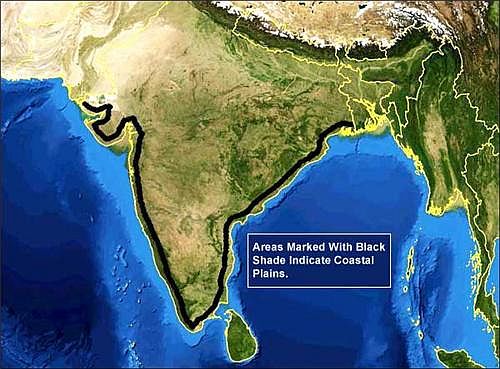Briefly discuss the physiography of the ‘coasts’ in India.
Civil Services Main Examination
General Studies (Paper - 1) : Model Question & Answers

Question: Briefly discuss the physiography of the ‘coasts’ in India.
Answer: The coasts that surround the Indian Peninsula are of the longitudinal Pacific type which border mountain chains. The major portions of the Indian coasts are either stable or advancing, being built into the sea by deltas or estuaries. However, an example of the retreating type of coast is found near Rameshwaram where the land surface connecting the southern tip of India with Sri Lanka was drowned during the Quaternary times.
The East Coast: starts from the edge of the Ganga delta and extends right through to the southernmost tip of the Peninsula at Kanniyakumari facing the Bay of Bengal. The coast is mostly of the emergent type, that is, it is regular in outline and is characterised by offshore bars, fine sea beaches, sand ridges and lagoons. Most of the great rivers of India, barring a few notable exceptions, have their mouths on this coast. The coastal plain on the east is much wider than on the west. Here the narrow strip of beaches is fronted by rows of sand dunes, broken by a number of lagoons.
The West Coast also culminates at Kanniyakumari. South of the Indus delta is the Kathiawar Peninsula, and but for is the western coastline runs straight from the Gujarat Plains to the extreme south. This was formed by faulting. This straight looking coast is however quite jagged by a large number of coves and creeks. The Indentations in the west coast are not so prominent as those of other continents (for ex. Australia or Western Europe).
data-matched-content-ui-type="image_card_stacked"
Useful Tips & Articles
तैयारी कैसे करें? |
EXAM SUBJECTS |
STUDY RESOURCESDownload Free eBooks |


